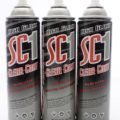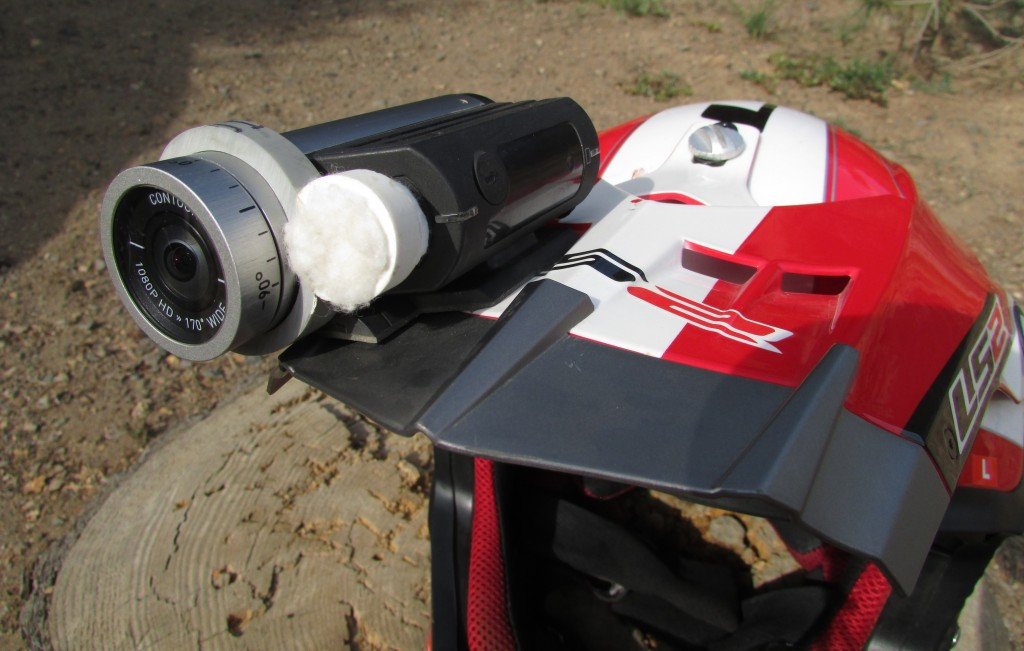 Helmet cameras offer a great way to document your dual sport excursions through the serenity of nature. They also provide a fantastic opportunity to televise your happenstance near-death experiences in the dirt for entertainment. Before GoPro came along and crushed the competition with an incessantly dominant marketing campaign, Contour was the go-to helmet cam for outdoor enthusiasts. Many users still prefer Contour’s video quality over anything produced by GoPro, but one thing GoPro has done (slightly) better from the start is sound quality in high-speed applications.
Above 20 mph the Contour sounds like an industrial toilet flushing. Get above 30 mph it sounds like straight static amplified through a PA system. And over 40 mph it sounds like having a front row seat for the Space Shuttle launch.
There is a complex way to help alleviate this issue by disassembling the camera part way, then soldering a wire to the inside of the camera and using a remote microphone that’s placed somewhere inside your helmet or on the bike tucked out of the wind. I was going to attempt this method but then I remembered that last time I soldered something my soldering iron accidentally broke when I threw it across the garage in frustration; a direct result of only being able to get the solder to adhere to my skin and somehow ending up with a huge glob of flux in my hair.
Anyway, seeing how I fancy myself resourceful and efficient (meaning lazy) I decided there had to be an easier solution, so I laid down on the couch to do some serious brainstorming. I woke up and hour later with a revelation – laying on the couch in the middle of the afternoon to brainstorm is a bad idea. So I took the Contour out to the garage and began to scrutinize it.
Helmet cameras offer a great way to document your dual sport excursions through the serenity of nature. They also provide a fantastic opportunity to televise your happenstance near-death experiences in the dirt for entertainment. Before GoPro came along and crushed the competition with an incessantly dominant marketing campaign, Contour was the go-to helmet cam for outdoor enthusiasts. Many users still prefer Contour’s video quality over anything produced by GoPro, but one thing GoPro has done (slightly) better from the start is sound quality in high-speed applications.
Above 20 mph the Contour sounds like an industrial toilet flushing. Get above 30 mph it sounds like straight static amplified through a PA system. And over 40 mph it sounds like having a front row seat for the Space Shuttle launch.
There is a complex way to help alleviate this issue by disassembling the camera part way, then soldering a wire to the inside of the camera and using a remote microphone that’s placed somewhere inside your helmet or on the bike tucked out of the wind. I was going to attempt this method but then I remembered that last time I soldered something my soldering iron accidentally broke when I threw it across the garage in frustration; a direct result of only being able to get the solder to adhere to my skin and somehow ending up with a huge glob of flux in my hair.
Anyway, seeing how I fancy myself resourceful and efficient (meaning lazy) I decided there had to be an easier solution, so I laid down on the couch to do some serious brainstorming. I woke up and hour later with a revelation – laying on the couch in the middle of the afternoon to brainstorm is a bad idea. So I took the Contour out to the garage and began to scrutinize it.
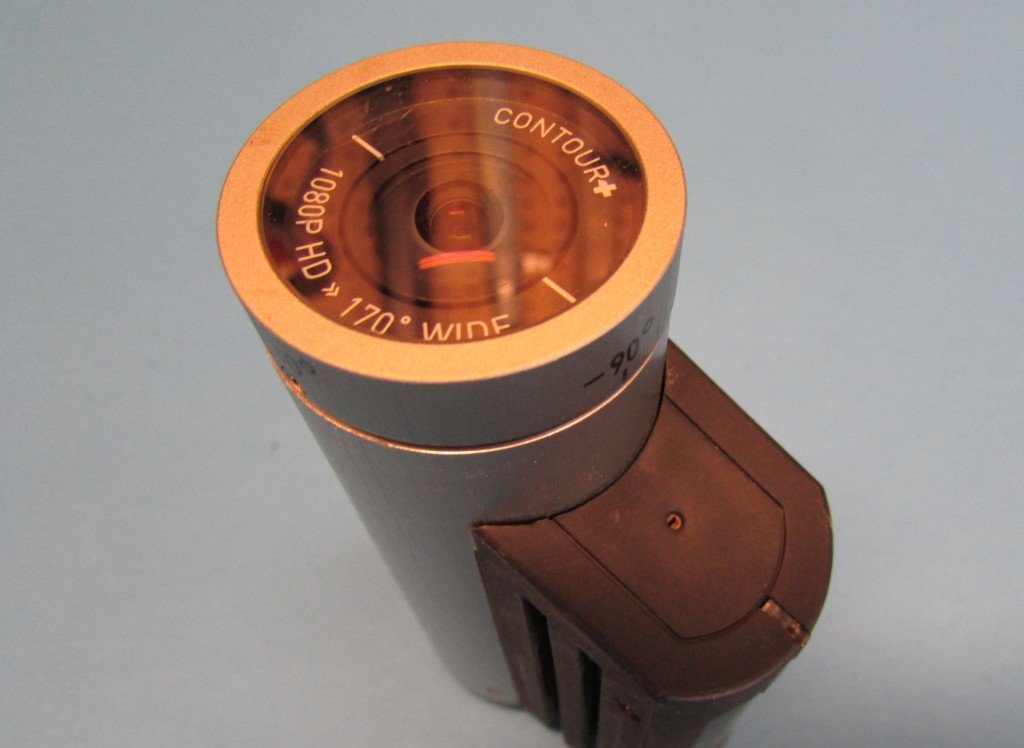 The obvious problem with the Contour’s microphone is its location and lack of protection. Front and center and completely exposed, its subjected to hurricane force winds while riding a motorcycle at high speeds. This brought to mind ludicrous storm coverage newscasts where the reporter has to be in the storm while discussing it, which I always assumed was done for my own personal enjoyment. However, it did bring to mind something else – the microphone in those newscasts are always covered with varying thicknesses of foam or fuzz to buffer against wind speed.
This was the genesis of my low-tech homemade windscreen for the Contour. I decided a slip-on collar would be the best design for ease of use and to provide the option of quickly removing it to switch from filming high-speed adventure riding to, say, filming a gubernatorial debate. All the materials I needed for this simplistic contraption were easily scrounged from the garage and my neighbor’s irrigation system.
MATERIALS NEEDED:
1 1/4 inch (inner diameter) PVC pipe or Conduit
1/2 or 3/4 inch (inner diameter) PVC pipe or Conduit
Super Glue or Epoxy
Cotton Ball or Foam
The obvious problem with the Contour’s microphone is its location and lack of protection. Front and center and completely exposed, its subjected to hurricane force winds while riding a motorcycle at high speeds. This brought to mind ludicrous storm coverage newscasts where the reporter has to be in the storm while discussing it, which I always assumed was done for my own personal enjoyment. However, it did bring to mind something else – the microphone in those newscasts are always covered with varying thicknesses of foam or fuzz to buffer against wind speed.
This was the genesis of my low-tech homemade windscreen for the Contour. I decided a slip-on collar would be the best design for ease of use and to provide the option of quickly removing it to switch from filming high-speed adventure riding to, say, filming a gubernatorial debate. All the materials I needed for this simplistic contraption were easily scrounged from the garage and my neighbor’s irrigation system.
MATERIALS NEEDED:
1 1/4 inch (inner diameter) PVC pipe or Conduit
1/2 or 3/4 inch (inner diameter) PVC pipe or Conduit
Super Glue or Epoxy
Cotton Ball or Foam
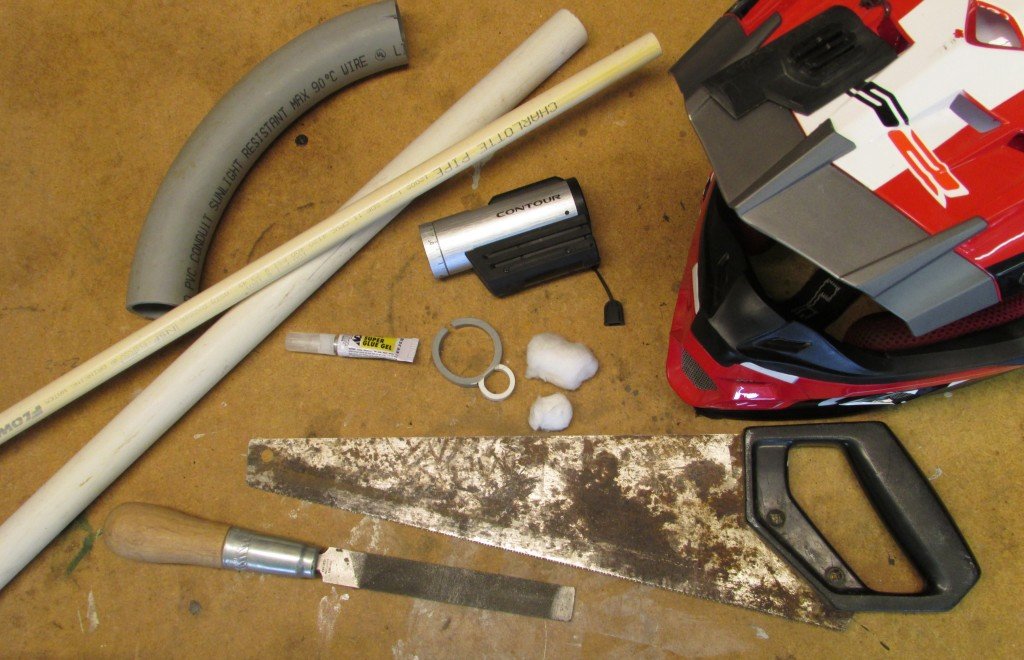 TOOLS NEEDED:
Hacksaw or Pipe Saw
Flat File
10 oz Glass
3 Medium Sized Ice Cubes
8 oz Blanton’s Single-Barrel Bourbon
STEP ONE:
Cut a matching 1/4 to 3/8 inch thick slice off both sizes of the PVC pipe or conduit. Next, make a perpendicular cut (or two to widen the gap) on one side of the 1 1/4″ pipe – this will allow the collar to spread apart when sliding onto the camera body and also provide better grip.
STEP TWO:
Using the saw and/or flat file, create a flat surface of equal distance on both the smaller and larger pipes. This provides a better bonding surface for the glue.
STEP THREE:
Apply adhesive to both sides and hold together applying consistent pressure for a minute or until you become bored.
STEP FOUR:
Insert the ice cubes into 10 oz glass and then fill glass with Blanton’s Bourbon. Ingest contents orally. Savor the warm sensation in your gut and reflect upon how everything in life seems better when consuming the sweet golden brown nectar of the gods. Repeat as necessary.
STEP FIVE:
After suitable time to allow the adhesive to cure, slip collar over the Contour’s lens and align the center of the smaller pipe with the microphone. Insert a small chunk of foam or other material into this space – I chose to use a cotton ball as I had a multitude left over from last home pedicure.
TOOLS NEEDED:
Hacksaw or Pipe Saw
Flat File
10 oz Glass
3 Medium Sized Ice Cubes
8 oz Blanton’s Single-Barrel Bourbon
STEP ONE:
Cut a matching 1/4 to 3/8 inch thick slice off both sizes of the PVC pipe or conduit. Next, make a perpendicular cut (or two to widen the gap) on one side of the 1 1/4″ pipe – this will allow the collar to spread apart when sliding onto the camera body and also provide better grip.
STEP TWO:
Using the saw and/or flat file, create a flat surface of equal distance on both the smaller and larger pipes. This provides a better bonding surface for the glue.
STEP THREE:
Apply adhesive to both sides and hold together applying consistent pressure for a minute or until you become bored.
STEP FOUR:
Insert the ice cubes into 10 oz glass and then fill glass with Blanton’s Bourbon. Ingest contents orally. Savor the warm sensation in your gut and reflect upon how everything in life seems better when consuming the sweet golden brown nectar of the gods. Repeat as necessary.
STEP FIVE:
After suitable time to allow the adhesive to cure, slip collar over the Contour’s lens and align the center of the smaller pipe with the microphone. Insert a small chunk of foam or other material into this space – I chose to use a cotton ball as I had a multitude left over from last home pedicure.
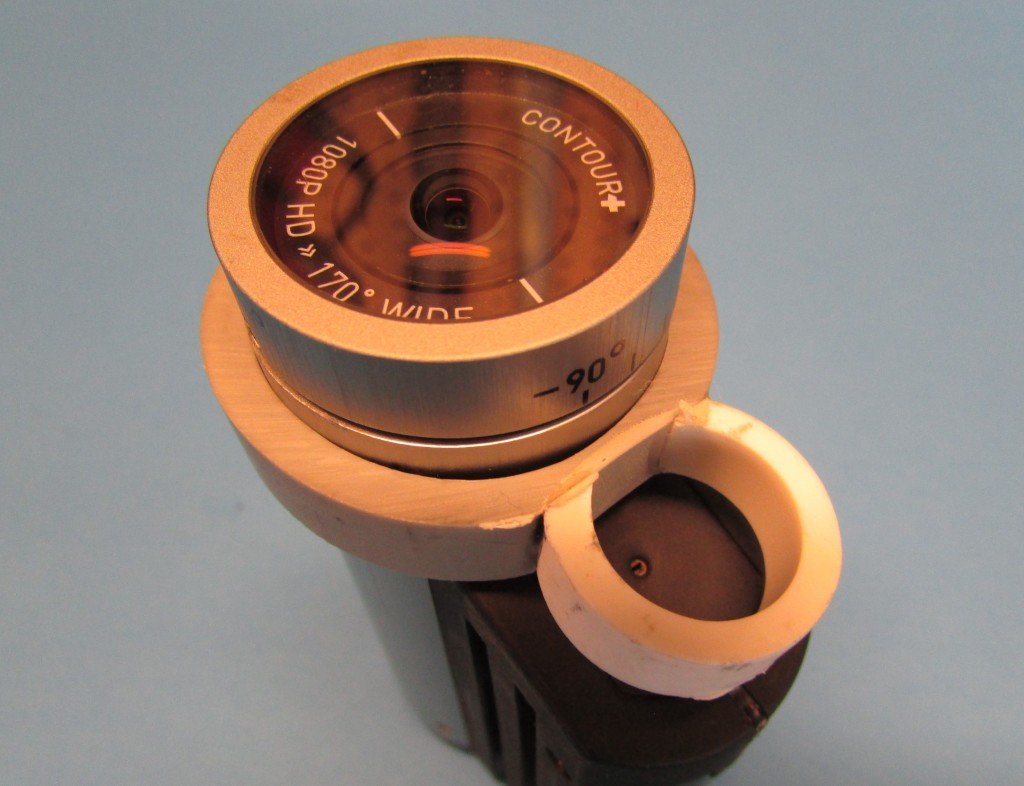 While this doesn’t eliminate all wind noise, it does reduce it significantly and allow the sweet melody of an aftermarket exhaust to become audible. Of course, this is assuming one prefers the sound of the motorcycle to overdubbed electronica or butt rock.
There’s also a chance wind noise could be further reduced by trying different materials to block the microphone. So far cotton seems to work best for me as it packs up snug against the microphone, completely covering the opening for the mic. I’ve also thought about using a small tampon, but I assumed that would produce too much static – from my riding buddies.
While this doesn’t eliminate all wind noise, it does reduce it significantly and allow the sweet melody of an aftermarket exhaust to become audible. Of course, this is assuming one prefers the sound of the motorcycle to overdubbed electronica or butt rock.
There’s also a chance wind noise could be further reduced by trying different materials to block the microphone. So far cotton seems to work best for me as it packs up snug against the microphone, completely covering the opening for the mic. I’ve also thought about using a small tampon, but I assumed that would produce too much static – from my riding buddies.



